Ronnie Pickering among Hull's 'alternative heritage' honours
- Published
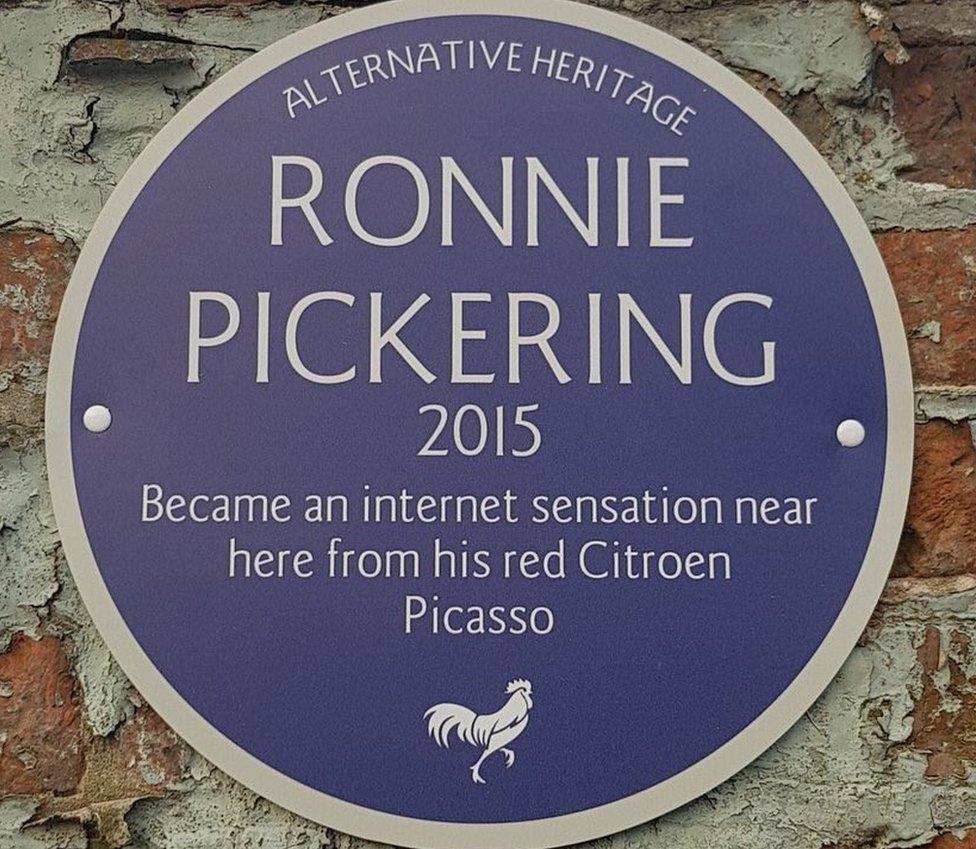
Ronnie Pickering briefly found fame in 2015 when his roadside rant went viral
A group is installing alternative blue plaques in Hull to celebrate the city's unusual achievements and interesting characters.
Calvin Innes, of Drunk Animal Creative Studio, said the idea was to feature "the good, bad, and quirky".
The latest addition to the collection is a plaque for Ronnie Pickering, whose outburst against a motorcycle rider went viral in 2015.
The plaques also mark local cuisine, including a spicy condiment for chips.
Mr Innes said there were now 17 plaques dotted around the city, with more planned over the coming weeks.
Mr Pickering hit the headlines in 2015 when he was filmed asking a motorcycle rider "do you know who I am?" and challenging him to a "bare-knuckle fight" after being overtaken. He later apologised for his outburst.
Mr Innes said: "Whether people like it or not, it is a part of Hull's make-up.
"We are celebrating the good, bad, weird and quirky."
Mr Innes said the plaques, "championing the living legends of Hull", had generally been well received, with the most popular public suggestion by far being Mr Pickering.
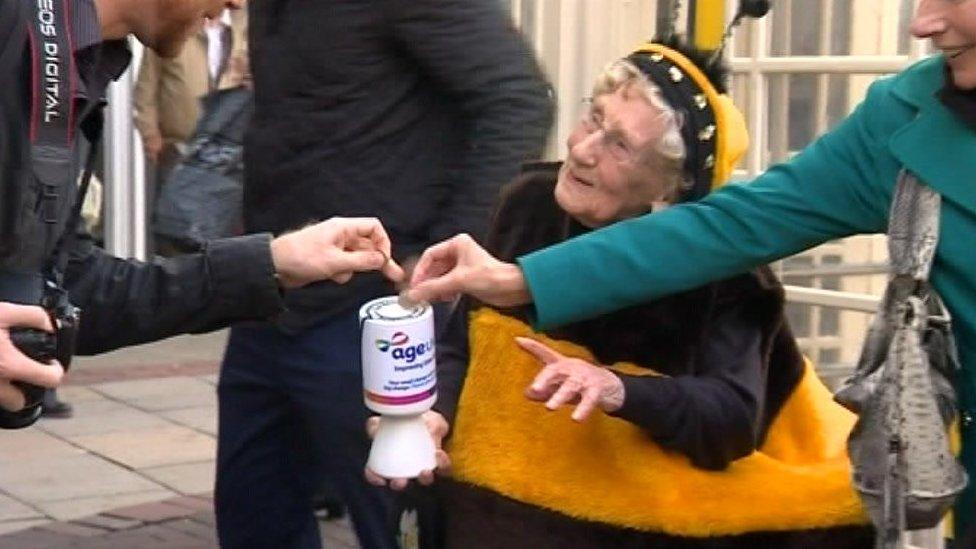
Jean Bishop, who has raised over £100,000 for Age UK while dressed as a bee, has been honoured with a plaque in Princes Quay
The alternative plaques, which have all been installed under cover of darkness, and with permission from landowners, also honour Jean Bishop, who raised over £100,000 for Age UK while dressed as a bee, and Graham Boanus, who waded across the waters of the Humber for charity in 2005.
Hull-born mathematician John Venn - who came up with a method to illustrate data in groupings - is celebrated, as is his beard.
One wag on Twitter wrote: "I've never met John Venn, we don't mix in the same circles."
Local tour guide Paul Schofield also posted to say the plaque "celebrating Hull's beardy mathematician" was his favourite so far.

The plaque celebrating John Venn is located next to the Drypool Bridge
There is also a tongue-in-cheek plaque marking the spot where in 1984 Lee gave Sandra a "croggy" - a ride on the handlebars of his bicycle.
It is a nod to the playground talk of the 80s, Mr Innes said.
Another hails Rod and Brenda Wilson who introduced "chip spice" to the city - a spiced salt condiment that is a ubiquitous offering in local chip shops.
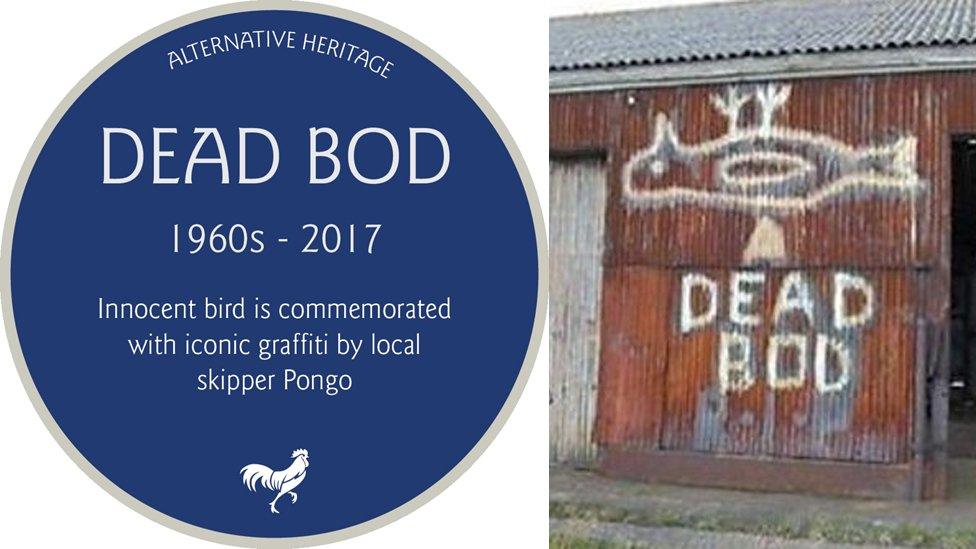
The Dead Bod plaque alongside an image of the original graffiti, which is now housed in a local art gallery
Graffiti painted on a shed at Alexandra Dock in the 1960s, known as Dead Bod, is also honoured.
The artwork, painted by two trawlermen, welcomed fishermen on their return to the waters of the Humber.

A potted history of plaques
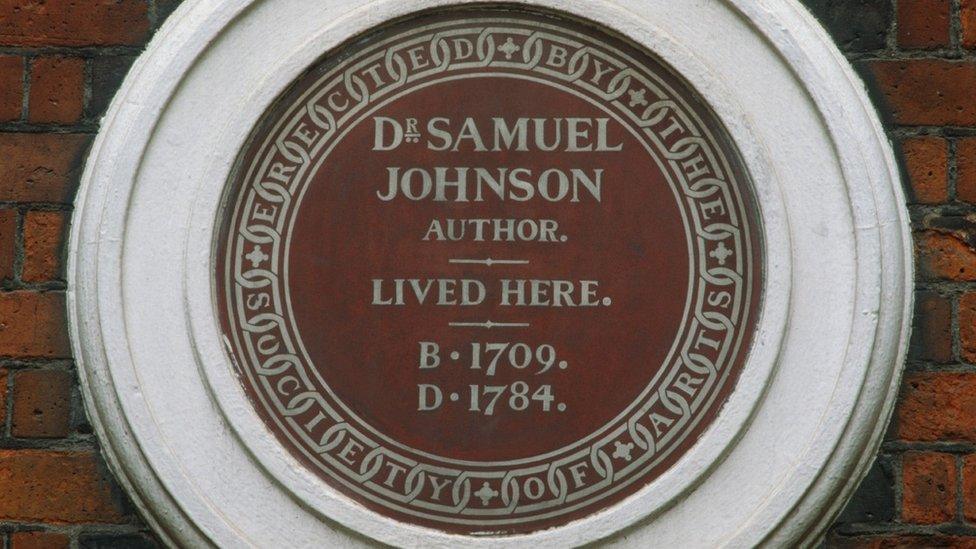
England's first blue plaque scheme started with a tribute to poet Lord Byron, marking his birthplace at 24 Holles Street, London
The London programme, launched by the Society of Arts, is now managed by English Heritage
Recipients of the official awards must have been dead for at least 20 years and must have lived at the location they are connected with either for a long time or during an important period
Outside London, many local councils, civic societies and other organisations run similar schemes
Not all plaques are blue, including the one marking the London home of author, editor and essayist Dr Samuel Johnson at 17 Gough Square
- Published6 March 2019

- Published29 December 2017

- Published29 May 2016
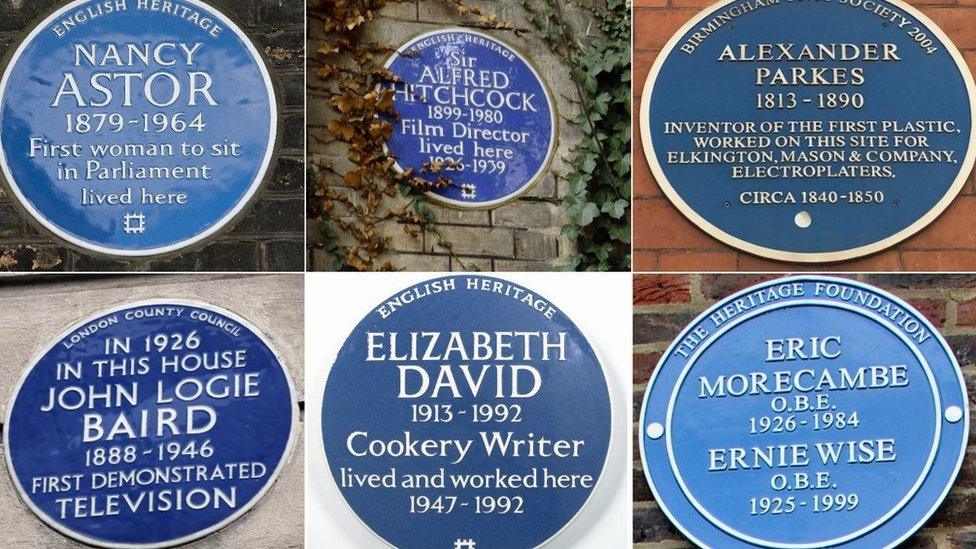
- Published29 September 2015
